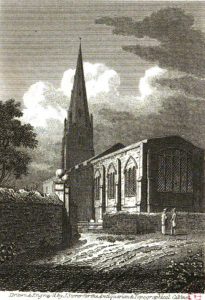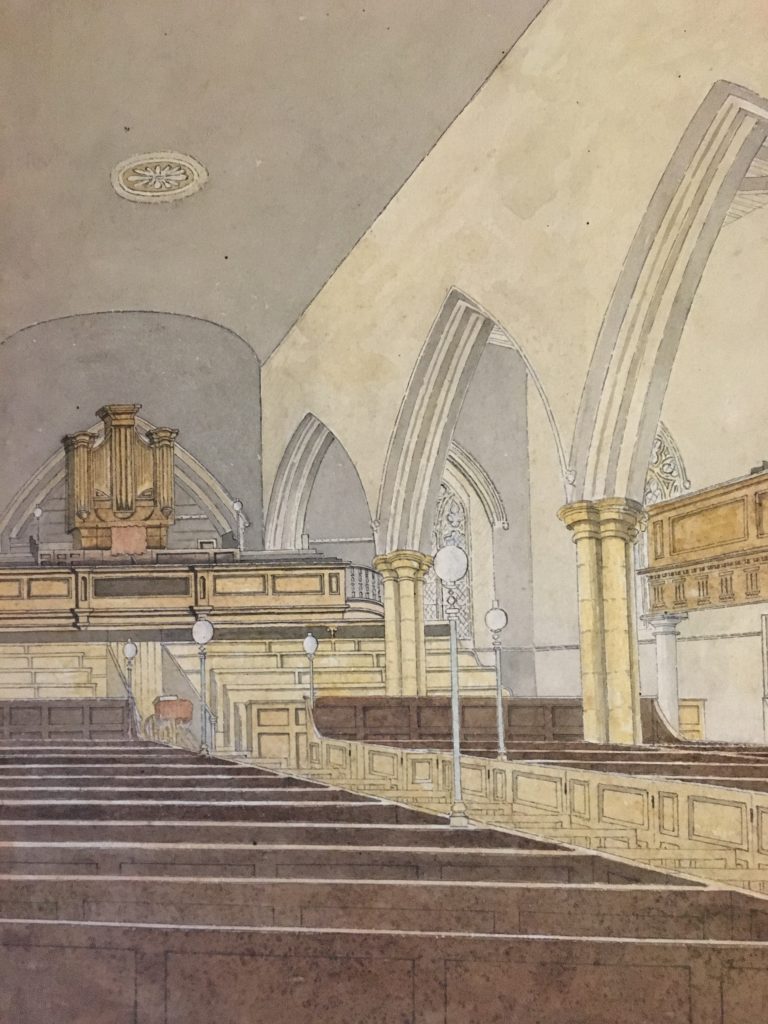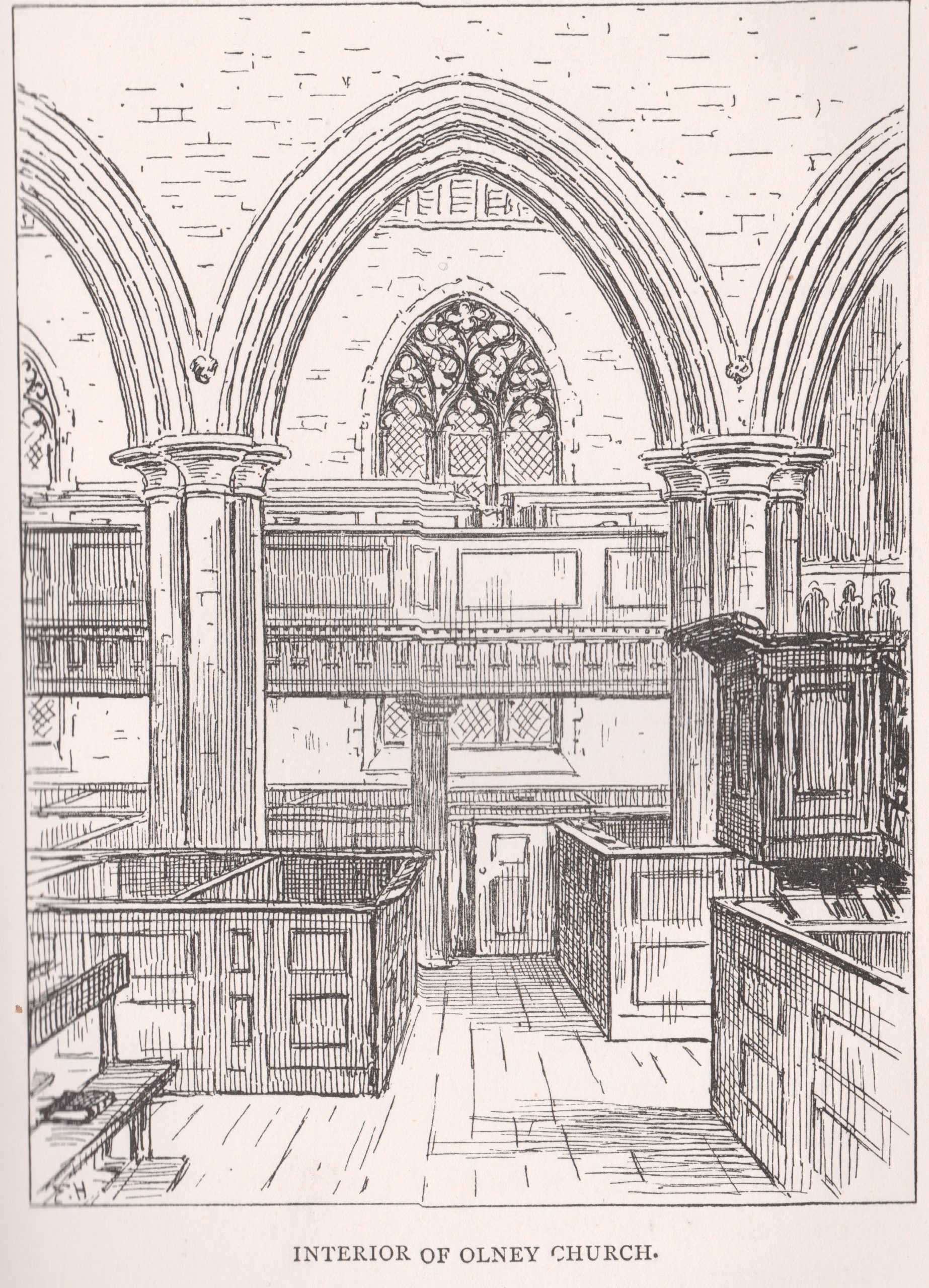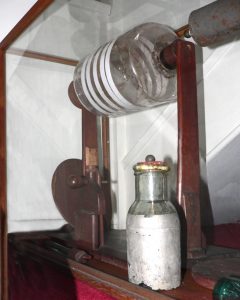In 1893, the Buckinghamshire Archaeological Society published an article in ‘Records of Buckinghamshire’ titled ‘Olney Church’.
BAS has kindly allowed us to reproduce their article here. We have updated the 1893 article by adding further information and sources from the Cowper & Newton Museum Collection.
What might the Church of St Peter & St Paul have looked like when Rev John Newton was Curate-in-charge?
Although there are no illustrations of the interior of the Church during the time that Newton was Curate-in-charge (1764 until the end of 1779), there are several drawings and paintings from 1810 – 1854. There is also a description of the repairs to the Church in 1807 in James Sargent Storer’s ‘The Rural Walks of Cowper; displayed in a series of views near Olney, Bucks, representing the scenery exemplified in his Poems, 1822.’
The image shown in the header to this article is a contemporary or near contemporary painting of the Church. It is owned by the Cowper & Newton Museum and shows ‘The Great House’ to the centre of the painting.
Clicking on the page image allows you to enlarge the size of the image in order to read the original article.
Interior of the Church looking East from the 1893 article
The original water colour by Walter Pennington Storer is on display at the Cowper & Newton Museum.
Compare the view by exploring this 360 degree internal and external tour of St Peter & St Paul.

The ‘Newton Gallery’ can be seen on the left in this photograph.
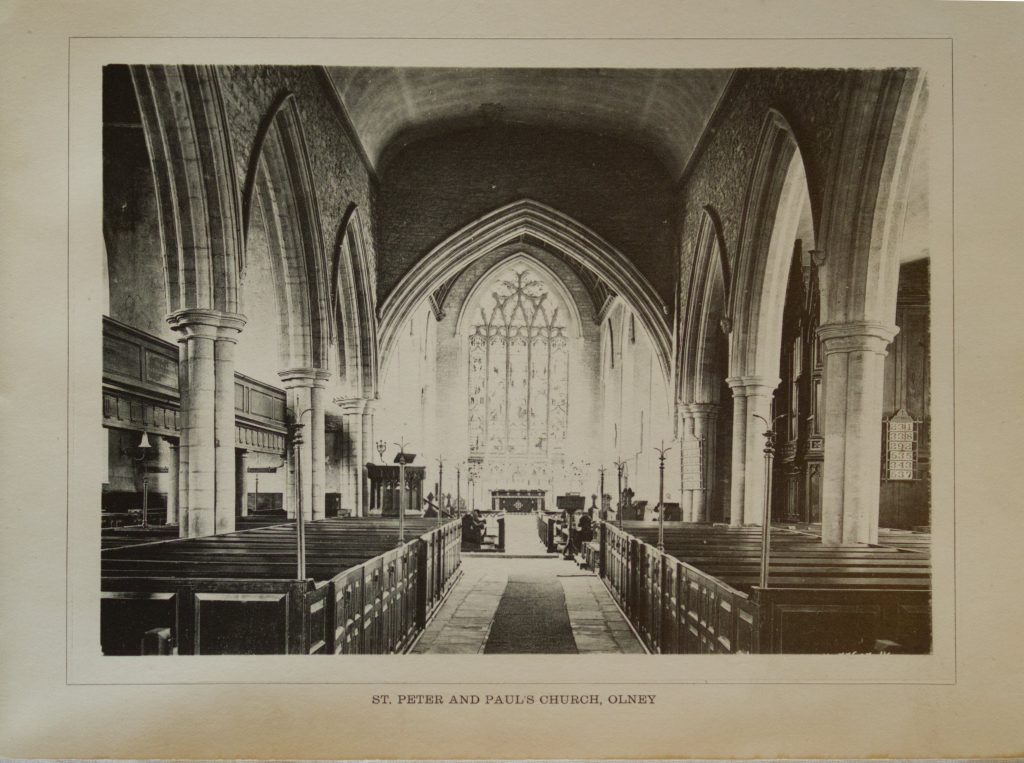
The ‘Newton Gallery’ can be seen on the right in the painting above.
‘Mentioned my desire [to Lord Dartmouth] to have a new gallery in the church, as I have reason to hope when the spring advances we shall be crowded and straightened for room.’ (Diary 31st January 1765)
‘The new gallery so far advanced that we near 100 people in it, yet there seemed to be no more room in the body of the church.’ (Diary 21st July 1765)
Photograph (left) Views of Olney and District published by W.I. Knight
View of St Peter & St Paul by James Storer, published in his ‘Rural Walks of Cowper’, 1822.
The ‘Great House’, where Prayer meetings were held, is located to the right of the Church. It was demolished in the 19th century.

In his book ‘The Town of Cowper’ published by Olney resident Thomas Wright in 1893, he tells us:
‘The only gallery now existing -and that it is is proposed to remove – is the one erected in the north aisle by John Newton, which contains the pew of the poet Cowper.’

A section of the dismantled gallery on display at the Cowper & Newton Museum
In the year 1807, it was discovered that the church fabric required very serious attention.
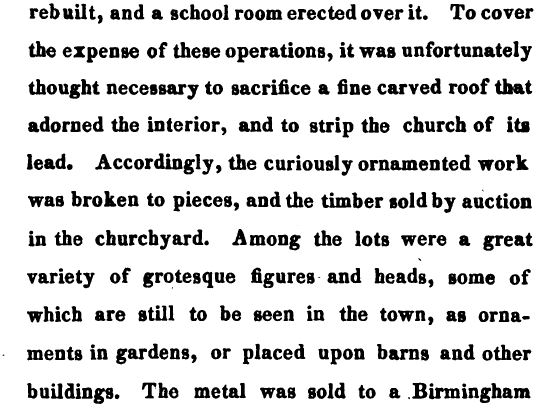
This wooden figure is in the Museum collection but we are unsure if it is part of the ‘fine carved roof that adorned the interior,’
Information from Storer, James Sargent, The Rural Walks of Cowper; displayed in a series of views near Olney, Bucks, representing the scenery exemplified in his Poems, 1822

Further Reading
Antiquarian and Topographical Cabinet, containing a series of Elegant Views of the Most Interesting Objects of Curiosity in Great Britain accompanied with Letter-Press Descriptions Vol VIII, 1810 (Contains an article about the history of the Church) Digitised by Google
John Newton’s Diary 1765 transcribed and annotated by Marylynn Rouse.
Wright, Thomas, The Town of Cowper: Or The Literary and Historical Association of Olney and Its Neighbourhood, 1893
Storer, James Sargent, The Rural Walks of Cowper; displayed in a series of views near Olney, Bucks, representing the scenery exemplified in his Poems, 1822 (Description of the repairs to the Church in 1807)
Marshall, Emma, On the Banks of the Ouse or Life in Olney a Hundred Years Ago, A Story by Emma Marshall, Third Thousand, 1888
Website of St Peter and St Paul, Olney
Church of Saints Peter and Paul, Historic England entry listing


